
The average 501 Maico of the era would pull about 37 horsepower on the dyno with the carb properly jetted and the timing set at 2.5mm before Top Dead Center. The fact that they registered a mere 33.1 horsepower is consistent with an richly jetted 501, which is the way the bikes were delivered.
We know that a few extra ponies are available with any bike that’s jetted crisply. So why did the 501 have such a great reputation, even running at its best?
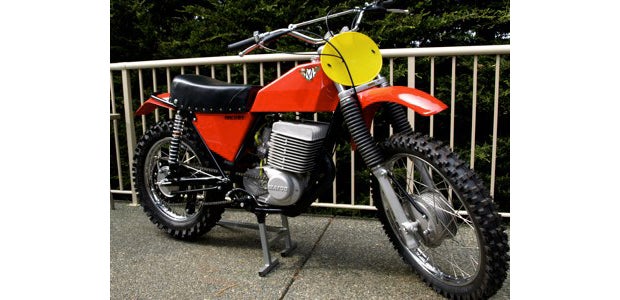
A bit of history is in order. When the first 501 Maicos hit these shores, they were equipped with three-speed trannies, because they had so much horsepower. Huh?
That's right. They had so much grunt, snap and power, that for motocross, a three-speed was all that was needed. Wait a minute! They had a measly 37 horsepower or so, right?
Wrong!
The first 501s delivered a whopping 52 horsepower on a Schenck eddy-current dyno. I know this for a fact, as we tested a pair of them. The first pulled 52.75 horsepower and the second registered 51.90.
So how did they manage to lose almost 20 horsepower on the way to the showroom floor? Simple. The 501 was delivered with the “small” clutch, which had a horrific pull. It took one very strong left hand to squeeze the lever in.
In order to make the 501 more palatable to the “average” rider, the distributor, Frank Cooper (the Maico distributor), demanded that Maico deliver the 501 with the easier-to-pull “big” clutch. While this worked much better, it also slipped badly under full power. In order to let the “big” clutch live, it was necessary to reduce the horsepower drastically. The compression was dropped, porting altered, timing changed and the pipe lengthened.
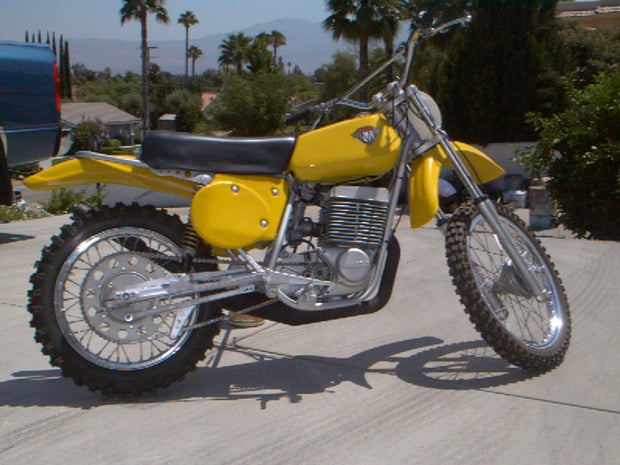
The result was a more mellow 501 that still had bags of grunt at low-end and midrange, but was certainly tame compared to the original design.
When I heard about the 501, I had to have one! After parting with about $1100, I picked up a brand-new, bright yellow 501 at Cooper Motors. After a brief break-in ride, I hammered the throttle hard and was rewarded with ho-hum power. The average 400 Maico would pull it through the gears and was much snappier on the hit.

After moaning long and loud about the disappointing performance, Brian Fabre (the manager at Cooper Motors) told me to bring the 501 over and we would correct the problem. It was there that I found out about the reason for the forgettable power.
However, fixing the problem was simple. First, we removed the wimpy big clutch and installed the stout small clutch, using the three-row chain for maximum strength. Then the barrel came off and we raised and widened the exhaust port to the original specs. The intake port got a pair of L-shaped slots ground in, and matching holes were drilled in the piston.
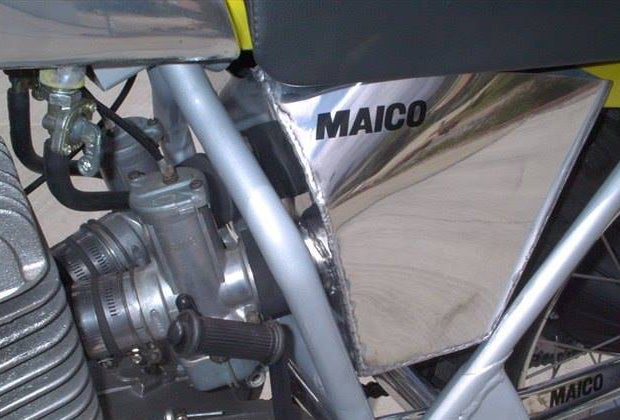
While we were fiddling with the piston, Fabre cut 1.5mm off the intake side of the piston skirt. We also cut a few millimeters out of the head pipe and shortened the stinger a full inch. The engine was then bolted to an accurate water-brake dyno and registered a whopping 52 horsepower on the first pass! We had to back the ignition timing off to 1.25mm before Top Dead Center to cool the big engine down.
Happy as a clam (assuming, of course, that clams are happy), I rode the bike and was delighted! Naturally, the clutch was almost impossible to use, but there was so much torque that I ignored it except for starting. Gearing was setup for desert the largest countershaft sprocket available was put on the front and a tiny one was bolted to the rear wheel.
We checked the speed of the bike by running it alongside a car on an empty desert road, and as close as we could figure, it ran about 105 miles per hour! Not too shabby.
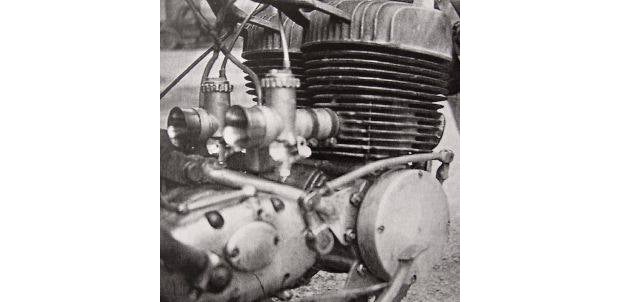
The bike was raced for a few months, and I actually won a bunch of trophies with it. It was almost like cheating! The 501 tracked straight as a rifle shot, pulled like a freight train and had suspension superior to every other bike on the track.
Then one day the Maico team came into town and Brian Fabre gave me another phone call: “Bring your bike over to the shop we’ll get some real horsepower out of it!”
I showed up that night and met the legendary Adolph Weil and the rest of the Maico team. They were busy setting up their bikes for the upcoming Trans-AMA Series. Since I was nice enough to make a bunch of beer and fried-chicken runs, Adolph and his mechanic decided to share some horsepower secrets.
They yanked the barrel off the 501 and Adolph scribed some marks on the barrel to show the correct “maximum” porting. Meanwhile, his mechanic took 0.125 off the head, jacking the compression ratio sky-high. A 40mm carb was installed, jetted in the ballpark, then the engine was bolted firmly to the dyno.
The first run yielded a monstrous gain, showing almost 58 horsepower at the countershaft sprocket! After correcting the jetting, we reached 61 horsepower. A few more cuts on the exhaust pipe had the engine peaking at 63 magnificent ponies!
I was afraid that the engine would turn into a hard-to-ride monster after this, but it was flexible, with a smooth power delivery and, best of all, it started up easier than a 125! I could actually start the bike with my hand once the engine was warmed up. The only trade-off was that it inhaled gas! With a four-gallon PMC tank, it could get a bit over 50 miles under hard racing conditions.
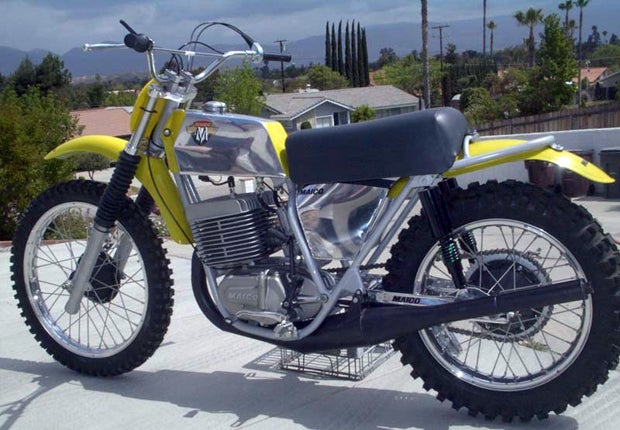
Racing the bike was a pure joy! We rechecked the top speed and registered about 112 miles per hour—and it would still chug through rocky canyons in low gear without slipping the clutch. The speed was so awesome that I was actually able to notch about a dozen overall wins at the Sand Sailors desert races held at the Ponderosa in the Mojave Desert.
Bear in mind, not much skill was involved. The course was a mixture of deep, sandy whoops, with a wide-open dry lakebed and fast fire roads tossed in. If ever a course was made for a particular bike, it was that one. All you had to do was hang on, try to keep your forearms from pumping up and gas it as hard as you dared.
You might think that would be just about all one could extract from a 501.
Not so! C.H. Wheat gave me a call and asked me to check out his 501 Maico. The bike was set up for TT racing and was equipped with disc brakes front and rear.

When I rode his 501, I realized that mine was not even close to putting out the horsepower his was! Closer inspection showed that he was running twin Mikuni carbs and a “Y” intake manifold. The first carb was small, about 28mm or 30mm, and the second was a whopping 44mm item. He had the carbs set up so that the smaller carb worked at lower revs, and then the big breather would kick in around 5000 rpm.
The power delivery was astonishing! It pulled cleanly and smoothly from idle, ripped into life at midrange and then literally shrieked through the higher revs like a road racer.
The horsepower? C.H. wasn`t sure, as he had not put the bike on a dyno. A guesstimate from my seat on the bike would place it at least 20% stronger than my personal 501. When we ran my bike and C.H.’s bike through the gears, side by side, it was no contest. He pulled me by at least six bike lengths and had perhaps 10 miles per hour more on the top-end.
His bike was raced at Ascot later and won the main event by a comfortable margin, with Danny Hockie at the controls. After a year or so of being raced on the District 37 TT/Scrambles circuit, C.H. retired the machine.
I have no idea where the bike is today.
Which brings us to the moral of this tale: Legends are not born; they are made! And made with tender loving care.


 Your Privacy Choices
Your Privacy Choices